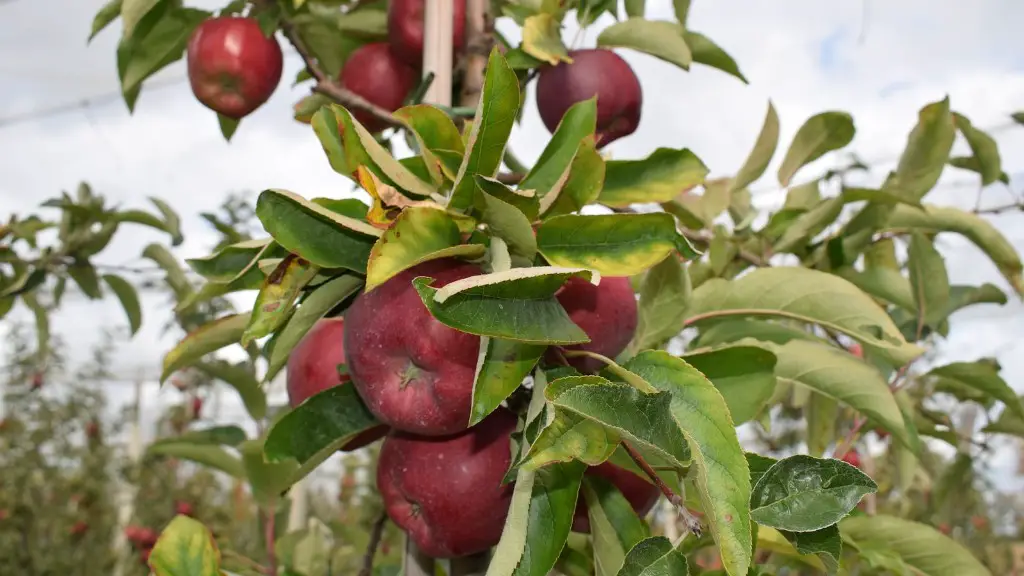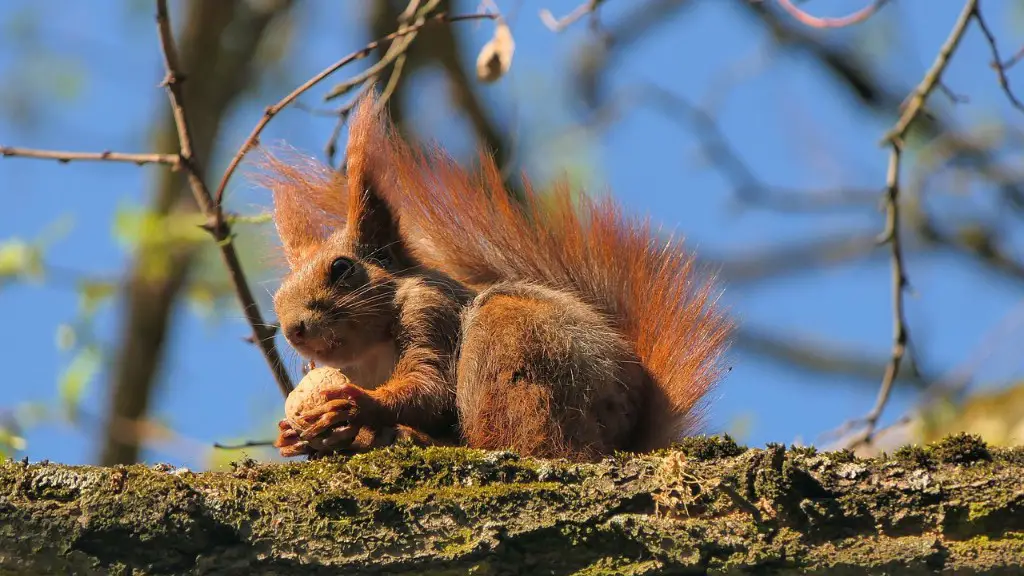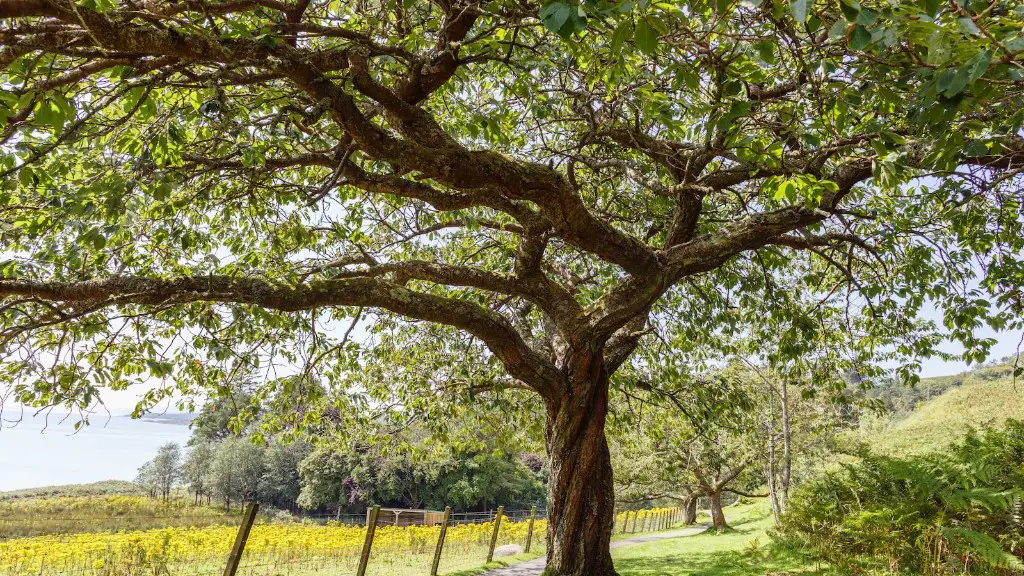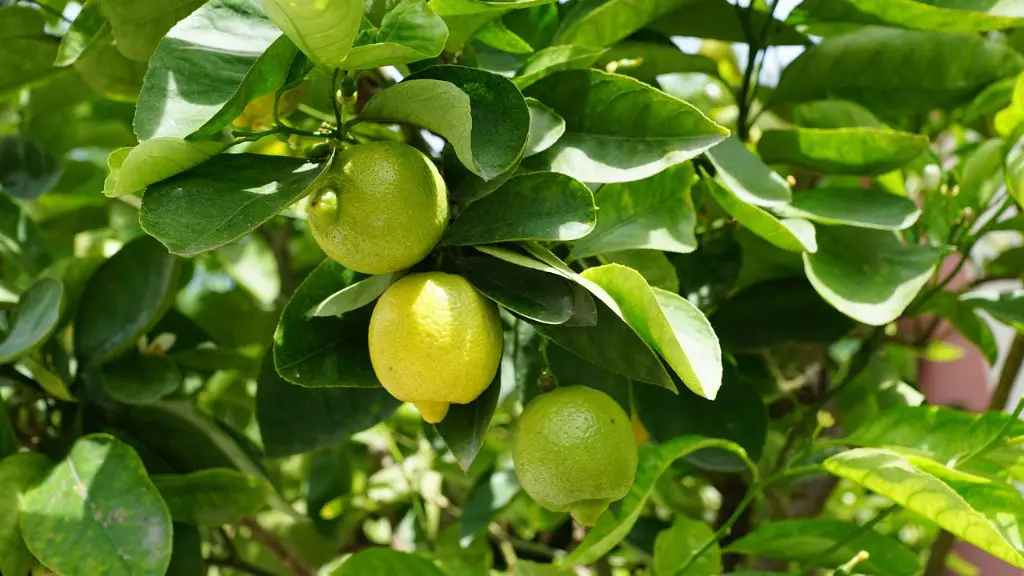It is common for homeowners to be concerned about why their apple tree leaves are being eaten. Many gardeners and home orchard keepers have noticed that their trees’ leaves have been eaten, leaving them looking bald and discolored. It appears as though something is eating away at the foliage, leaving holes and visible bare spots. In this blog post, we will explore some of the most common causes for leaf-eating in apple trees.
To start, it’s important to recognize that the vast majority of leaf-eating on apple trees is caused by pests. Pests such as caterpillars, cutworms, and aphids are most often to blame. These creatures will feed on the edges of the leaves, leaving them looking frayed and visibly damaged. They can also cause discoloration as they leave a sticky residue behind as they feed.
Another common cause of leaf-eating on apple trees is fungal diseases. Fungal diseases can quickly spread across an apple tree, causing the leaves to turn yellow or brown and eventually drop off. They can also create holes or discolored spots on the leaves. If left unchecked, a fungal infection can spread rapidly and become very difficult to control.
It’s also possible for environmental factors to cause leaf-eating on apple trees. If a tree is under stress from lack of water, over-fertilization, too much shade, or temperatures that are too hot or cold for the species, it can cause leaves to be eaten by the tree itself in an attempt to survive. In addition, hail or wind storms can damage leaves, resulting in visible bare spots and holes.
Finally, it’s important to note that some animals may also contribute to leaf-eating on apple trees. Deer, rabbits, and other small mammals can feed on the foliage, leaving behind holes and bare spots. Additionally, birds can inflict damage as they peck at the leaves in search of insects.
Exploring Natural Solutions
When it comes to tackling leaf-eating on apple trees, homeowners may be tempted to reach for chemical solutions. However, it is important to recognize that many of these solutions will only offer short-term relief and may harm beneficial insects and wildlife. Instead, one should consider natural solutions, such as releasing beneficial predators to control the insect populations, or making use of netting or plant wraps to deter small animals from feeding on the tree.
In addition, proper pruning and targeted fertilization can help to keep apple trees healthy and strong. Pruning away dead or damaged branches is a great way to make sure the tree is able to distribute nutrients efficiently. And applying targeted fertilization can help to ensure that the tree has the minerals and nutrients it needs to survive and thrive. By keeping an eye out for nutrient deficiencies and addressing them quickly, you can help to reduce the amount of leaf-eating that your apple tree experiences.
Finally, it’s important to keep an eye out for signs of disease. If your apple tree’s leaves are looking dull, discolored, or wilted, you should consult a professional to determine whether or not a fungal disease may be the cause. If a disease is present, it is important to act quickly to control it before it spreads further.
Identifying Switched Causes of Leaf-Eating
In some cases, homeowners may find that the cause of their apple tree’s leaf-eating is something entirely different. Cats, for example, can cause significant damage to foliage by sharpening their claws on it. The same is true for dogs and other small animals, though their damage is generally more random. Homeowners should be aware of any pets that may be accessing their yard, and make sure that they are kept away from the tree.
In addition, herbivorous wildlife such as deer, rabbits, and groundhogs sometimes feast on the leaves of an apple tree. If these animals are present in your area, it is important to take measures to keep them away from the tree, such as installing deer fencing or spraying the foliage with a repellent.
Finally, it is also possible that the leaves are being eaten by a fungus or bacteria. Black spot, for instance, is a type of fungus that infects apple trees and can cause the leaves to turn yellow or brown and eventually drop off. If this is the case, it is important to take swift action to control the infection before it spreads further.
Taking Preventative Measures to Improve Leaf-Eating
In order to reduce leaf-eating on apple trees, it is important to take preventative measures. This includes making use of organic pest control methods, such as introducing beneficial predators such as ladybugs and spiders to help keep the population of damaging insects in check. Additionally, planting your tree in the optimal location can help to reduce stress and encourage it to thrive, while ensuring that it receives adequate water and nutrients.
In addition, it is important to inspect the tree regularly for signs of disease and take measures to control any infections quickly. This can include pruning away affected branches, or applying targeted fungicides to affected areas. Finally, it is also important to dissuade any pets, wildlife, or other animals from accessing the tree to limit any damage caused by their presence.
Using Mechanical Solutions to Tackle Leaf-Eating
For those looking for a more immediate solution, mechanical solutions such as the use of netting or fences may be appropriate. Netting, for instance, can be used to prevent any animals from accessing the orchard and eating the leaves. Similarly, deer fencing can be used to keep out large animals such as deer, while burlap or other physical barriers can be installed to stop rabbits or other small mammals.
Frequent and consistent pruning is also an important part of preventing leaf-eating. By regularly pruning off any dead or damaged branches and twigs, you can help to ensure that the tree receives the necessary levels of light and air circulation. Additionally, pruning can help to promote healthy new growth and ensure that only healthy and robust foliage remains.
Finally, it is important to provide enough space for your apple tree. Too little space can cause the tree to become root-bound and may cause branches to rub together, which can cause damage and make the tree more susceptible to pests and diseases. Additionally, overcrowding can limit the necessary circulation of air and light, which could result in foliage being eaten by the tree itself.
Employing Successful Strategies to Combat Leaf-Eating
The key to successfully combatting leaf-eating on apple trees is to employ a comprehensive and comprehensive strategy. This should include taking preventative measures such as maintaining optimal growth conditions, releasing beneficial predators, and applying targeted fertilization. It should also include mechanical solutions such as the use of netting and fences, as well as utilizing natural solutions to reduce stress and nutrient deficiencies.
In addition, one should never ignore the possibility that their apple tree may be suffering from a disease. If the tree’s leaves are looking discolored or wilted, it is important to have it inspected by a professional and take steps to control any infections quickly. By employing a comprehensive and successful strategy, homeowners can reduce or even eliminate leaf-eating on their apple trees.




